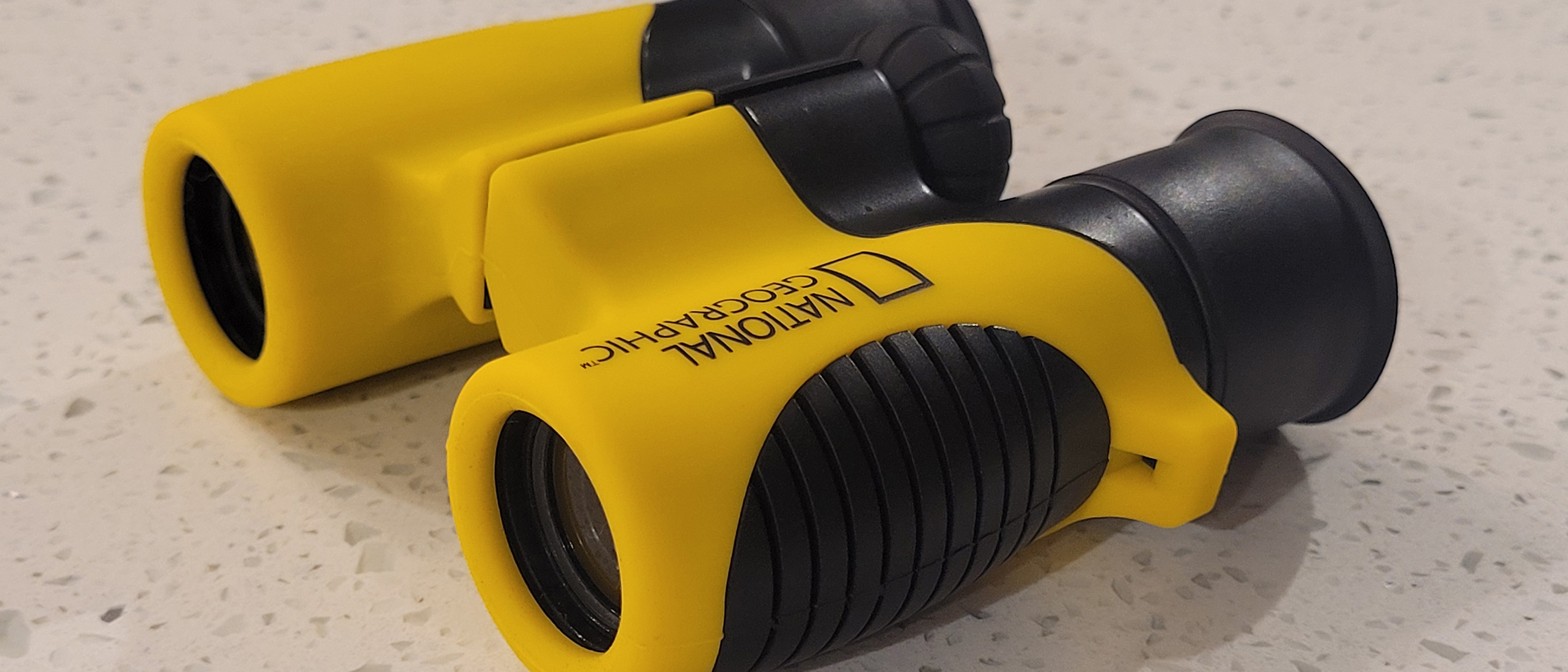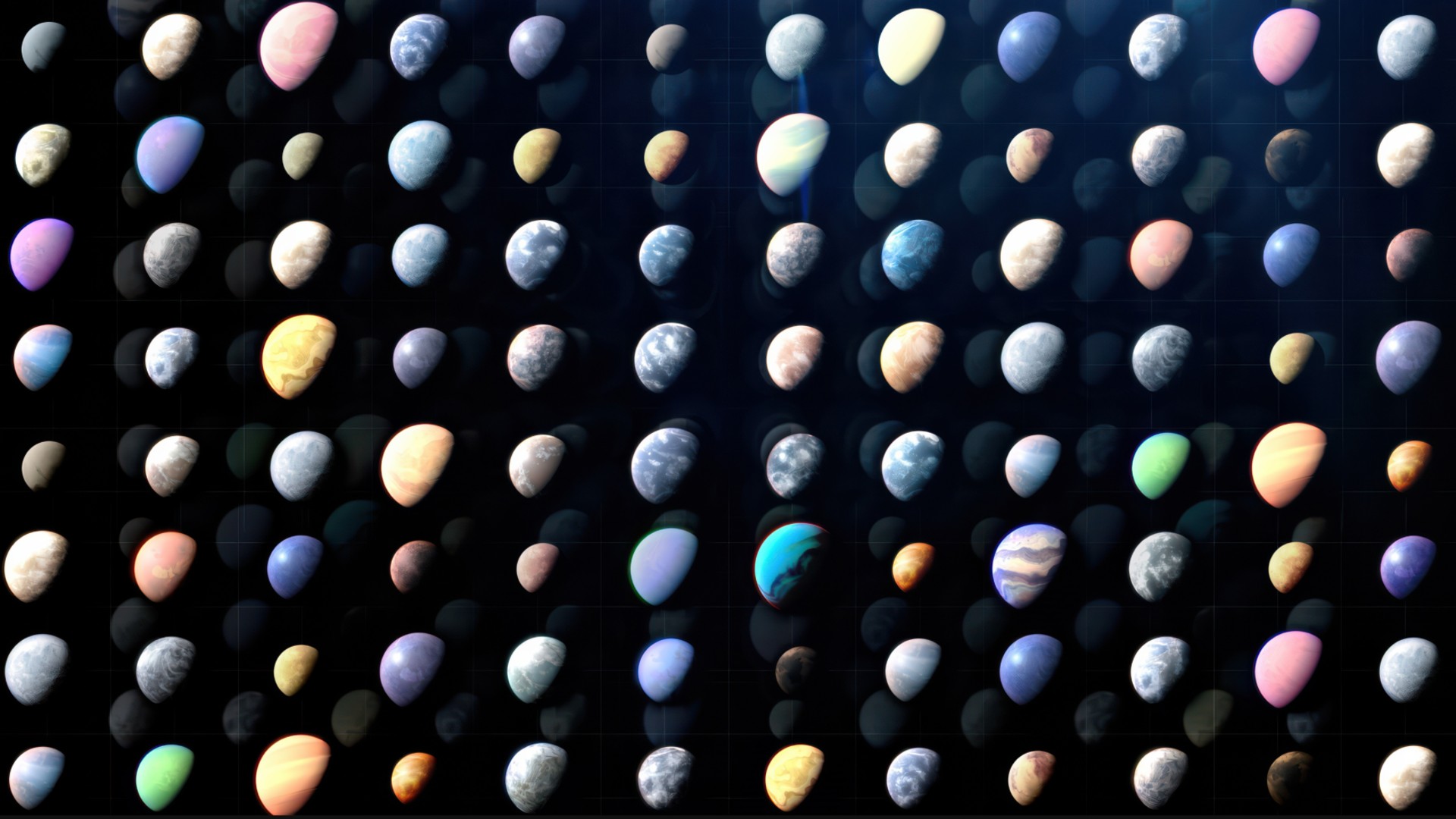Space Verdict
These are a big step up from a pair of toy binoculars, and a price point that warrants them being treated with respect, but one that doesn't break the bank.
Pros
- +
Perfect size for little hands
- +
Low magnification to help steady the image
- +
Bright attractive colors
Cons
- -
Tiny objective lenses
- -
Not water/fog proof
- -
BK-7 glass (not BAK-4)
Why you can trust Space.com
The National Geographic 6x21 Children's Binoculars are, as the name suggests, designed with the wishes and needs of children in mind. As with the National Geographic Star Projector it is made in collaboration with Bresser, a German company offering an extensive range of high-quality and reliable electronic products. The image through the binoculars is pleasing relative to the cost and size of the binoculars, but they lack the features and quality of more expensive adult-centric binoculars.
The sharpness in the center of the image is acceptable for a beginner user. At a $30 (approximate) price point, they are 'good enough' for a child to enjoy wildlife and nature spotting alongside their adult companion, who will undoubtedly have a much more sophisticated pair.
We bought ourselves a pair and put them to the test. As we're so used to the look and feel of binoculars for adults, we recruited our nieces and nephews to see their reactions and to obtain feedback from the target users themselves.
For alternative models, take a look at our Best binoculars for kids guide or our Best compact binoculars guide, which feature small but not necessarily purpose-built-for-kids models. Keep an eye on our Best binocular deals if you're looking for a recommended pair of binos at the best price. Or if it's general binos you need, be sure to check out our guide to the Best binoculars.
National Geographic 6x21 Children's Binocular review
National Geographic 6x21: Design
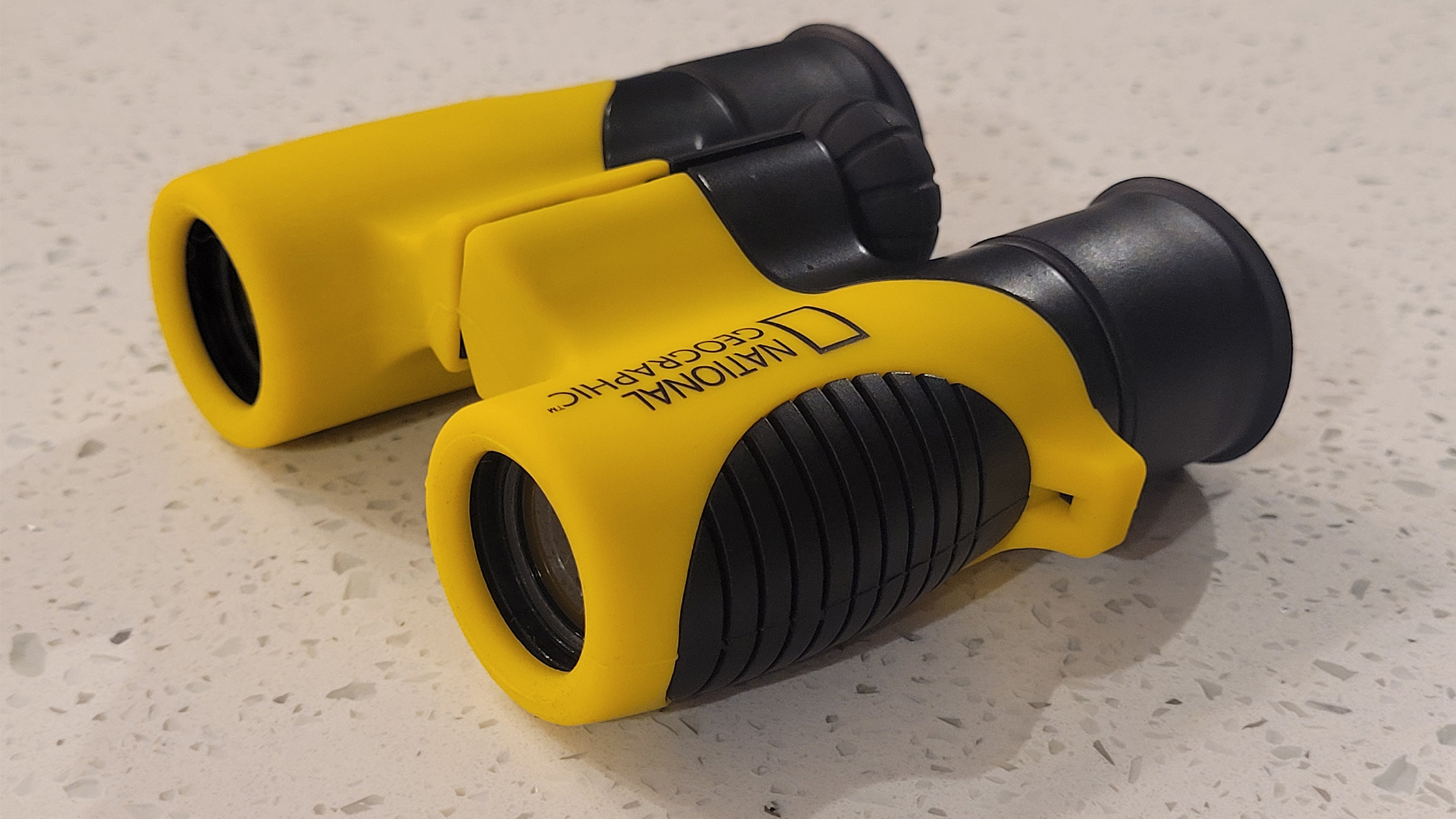
- Ergonomic for small hands
- Brightly colored
- High quality feel, not toyish
It is visually apparent that these are kids' binoculars. They are tiny and styled in National Geographic's black and bright yellow brand colors. The packaging is bright and kid-friendly, too; one of the children instantly scooped up the box as soon as he saw it.
It is important to note that these binoculars are more than just a 'kid's toy.' They are 'real binoculars' with a fully functional optical system and multicoated lenses. The exterior is coated with soft rubber, which feels thick and of good quality. Not only does this protect the binoculars themselves, but it will undoubtedly save your furniture or floorboards should they get dropped. They are easy to wipe clean too.
While the materials aren't as robust as those in high-end binoculars, the plastic and rubber construction keeps the binoculars exceptionally light. They can comfortably be carried around with small hands and held up to little faces for extended periods without the user's arms getting tired.
Breaking space news, the latest updates on rocket launches, skywatching events and more!

Design: Roof Prism
Magnification: 6x
Objective lens aperture: 21mm
Angular field of view: 5.8 degrees
Eye relief: Not specified
Weight: 167g
Dimensions: 95 x 110 x 31 mm
We must highlight that some models of the National Geographic Children's binocular (including the model we have) don't have right-eye diopter adjustment. This means unless the child's eyesight is the same in each eye, the image will not be as satisfactory as it could be if the diopter could account for differences in vision between eyes. Only after looking at the instruction manual did we realize there are three models in circulation, roof, prism and galilean, however, it needs to be clarified which model you'll get when you purchase one. We bought a 'roof' but received galilean.
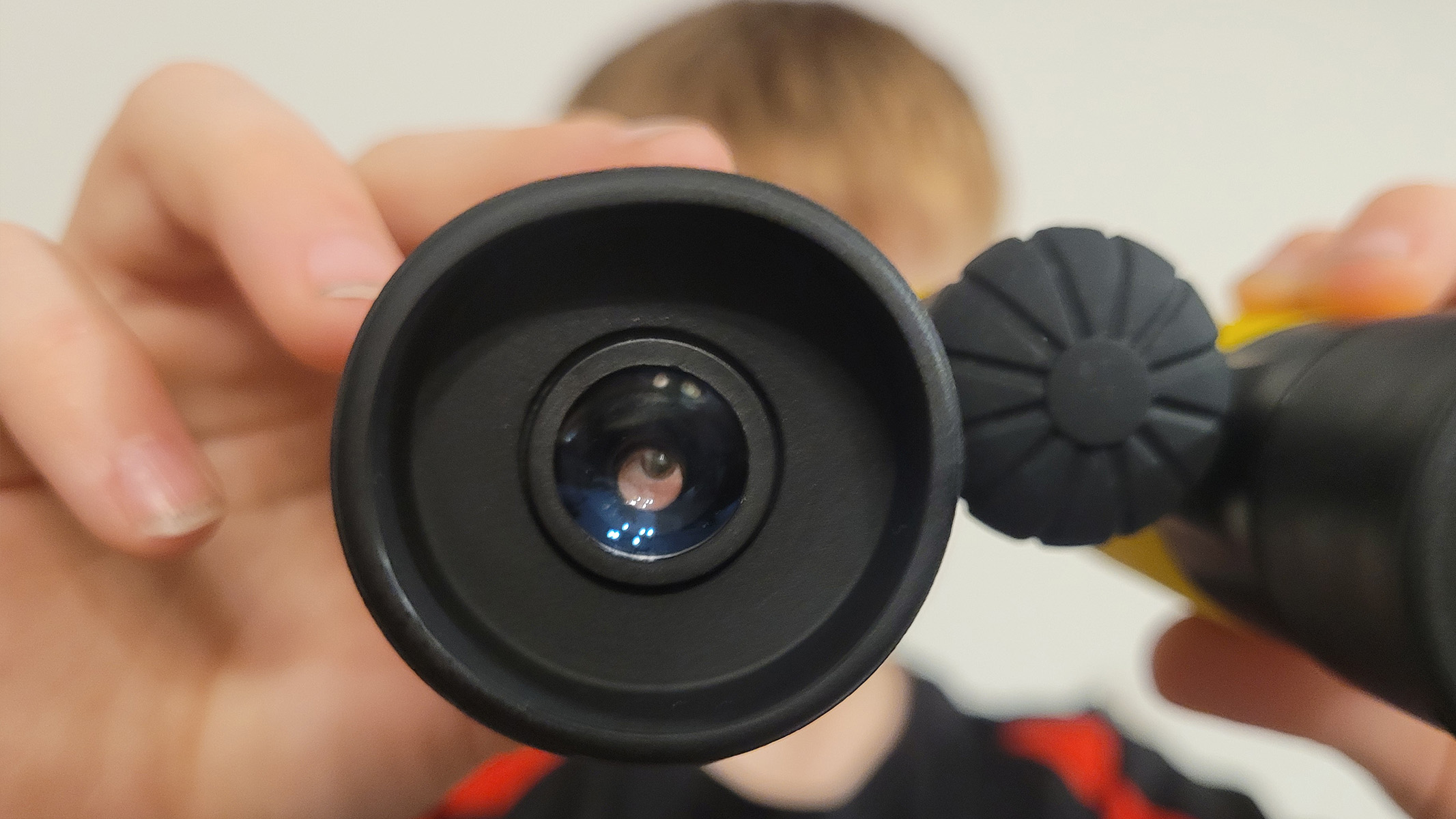
The galilean model claims to have folding eye cups. However, in reality they don't stay in place once folded we think it's because they are too small to fold. The roof and porro models both appear to have twist-up eyecups, making them more suitable for spectacle-wearing children.
National Geographic 6x21: Performance
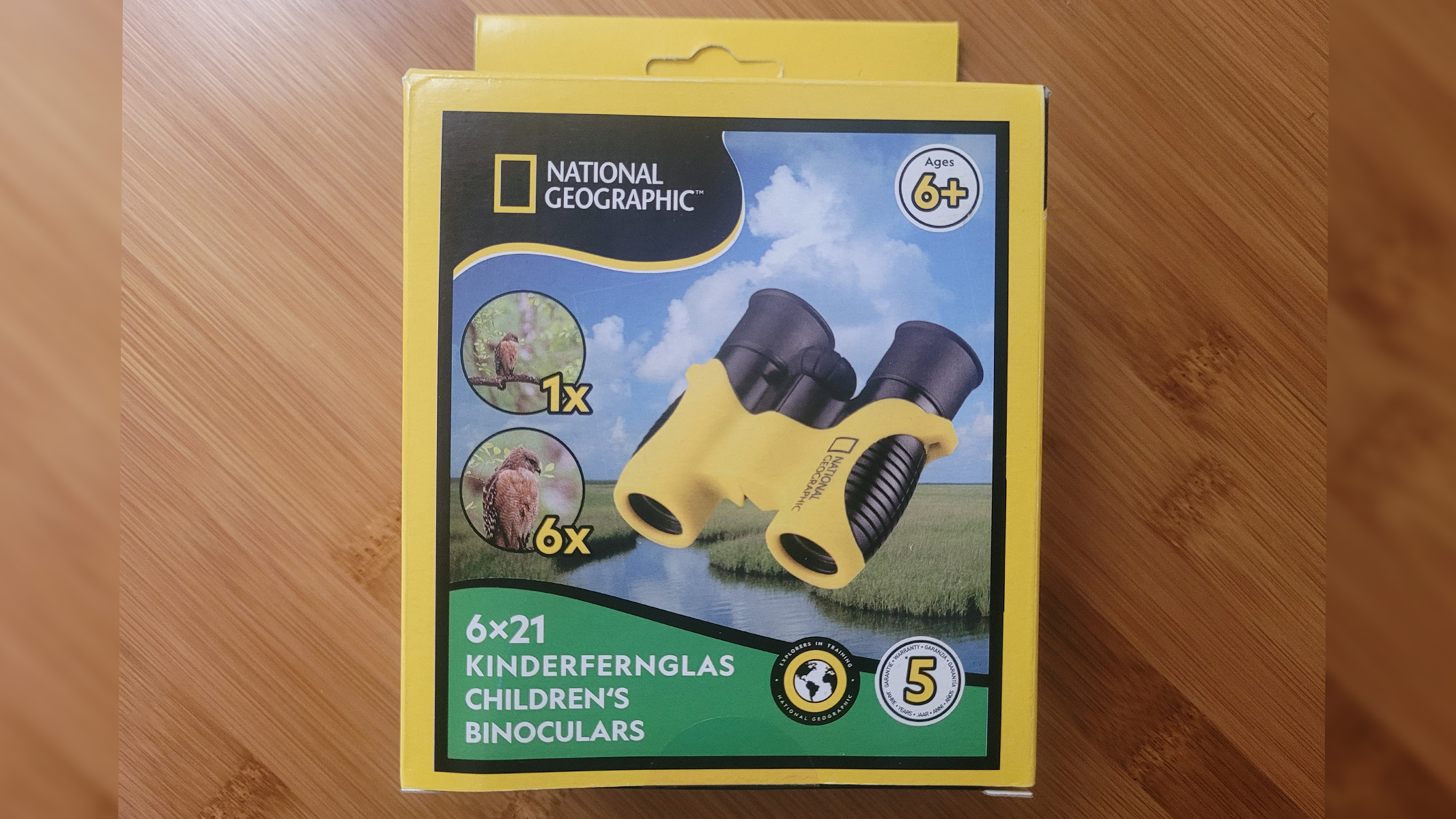
- Clear image in the center of the view
- Acceptable performance considering the price
- Low level of wobble thanks to low magnification
These binoculars come with 6x magnification (the image appears six times bigger than it does with the naked eye). While this seems pretty low for a pair of binoculars, there's a good reason for it. The higher the magnification, the higher and more noticeable any wobble would be when observing. The lower magnification, therefore, helps young users keep the image steady.
During testing, we asked the children to pick up the binoculars and quickly spot something in the distance. They had no problem steadying the image in the center of the field of view. On that note, the lower magnification inherently means a wider field of view. This makes tracking moving objects such as birds and planes much easier, as there is more time to follow them across the frame.
The center of the image is clear and bright, and for binoculars at this price point, that is fine. The image is sharp enough in the middle, but there is an apparent fuzzy ring around the edge. In more sophisticated models, the image should be clear across the whole frame, right to the very edge. This is partly due to the use of BK-7 glass instead of the preferred BAK-4 standard.
Despite the fuzziness at the edges, unless you're used to looking through BAK-4 glass (which most kids won't be), the image is perfectly acceptable. There is a slight yellowish tinge to the image, but again, this wouldn't be detrimental to the experience for the age of children these have been designed for (6+). Color fringing doesn't appear to be too much of a problem, helped in part by the low magnification.
National Geographic 6x21: Functionality
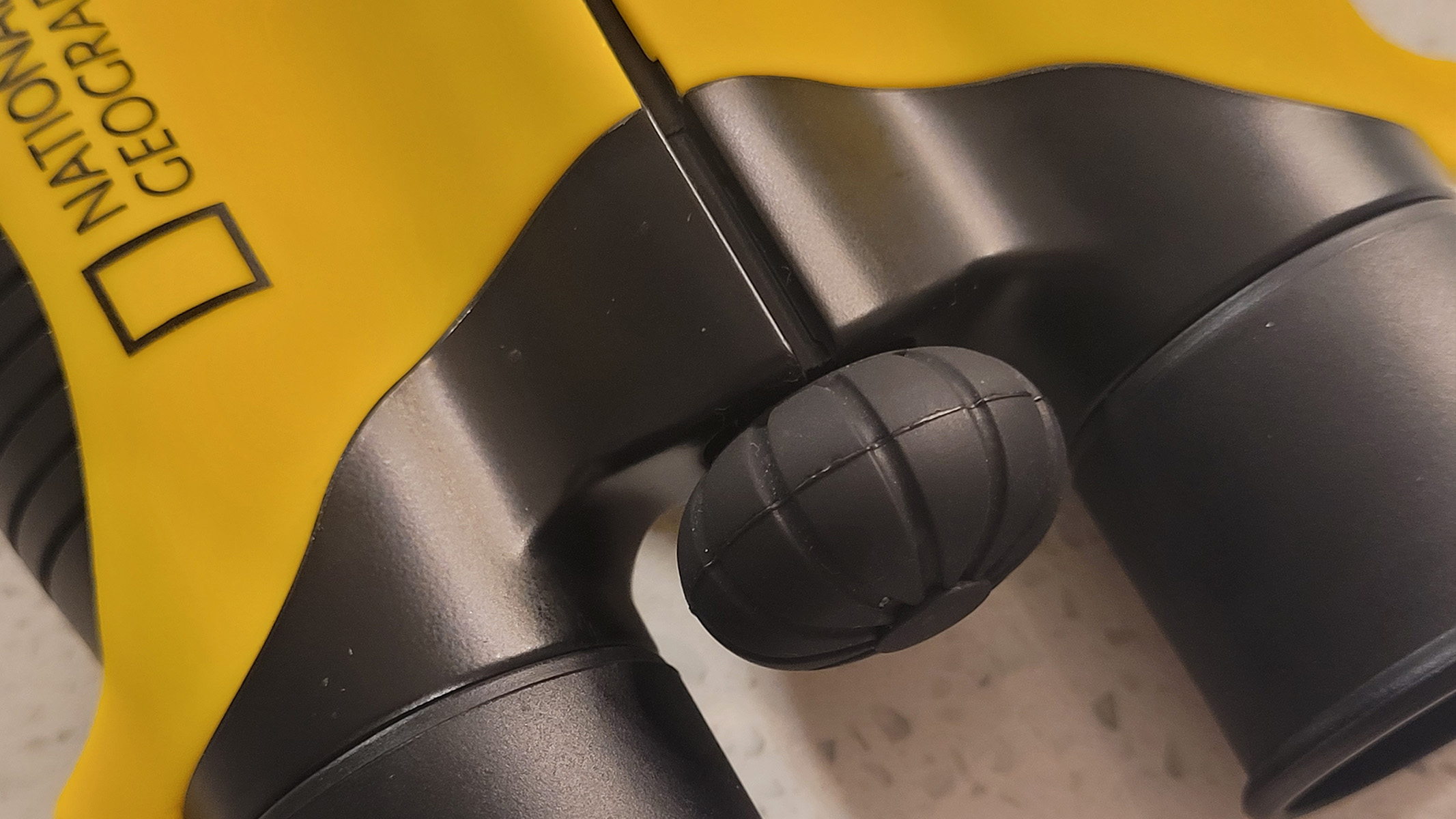
- No neck strap supplied
- Not suitable for temperature hopping
- Not good enough for stargazing
The binoculars are the perfect shape for little hands to hold, and the focus ring is chunky and tactile. It feels a little stiff, but this helps the child focus and avoid accidentally knocking it out of place. It is still loose enough that it only needs operating with one finger.
We tested the binoculars in different temperatures, and as expected, fogging was an issue because of the lack of waterproofing or nitrogen purging found in more expensive models. Of course, the fog will naturally reduce as it meets the ambient temperature, but it means you can't hop between temperatures (inside a warm car to out in a field on a winter's day, for example) quickly. For their price, this isn't a reason not to buy them, just be mindful to allow time for de–fogging.
The binoculars ship with a soft case with a loop for affixing it to a child's belt, a cleaning cloth, a coloring-in sheet, and a small carrying strap. Interestingly, there is no neck strap supplied. This is probably due to safety concerns, but a simple lanyard with a breakaway clip would have been a welcome inclusion. When observing the children using the binoculars, we noticed them getting 'abandoned' wherever the child was and getting left there. Having them hanging on a neckstrap would prevent this and make it less likely for them to get misplaced. That said, the bright yellow color makes them easy enough to spot.
Should you buy the National Geographic 6x21?
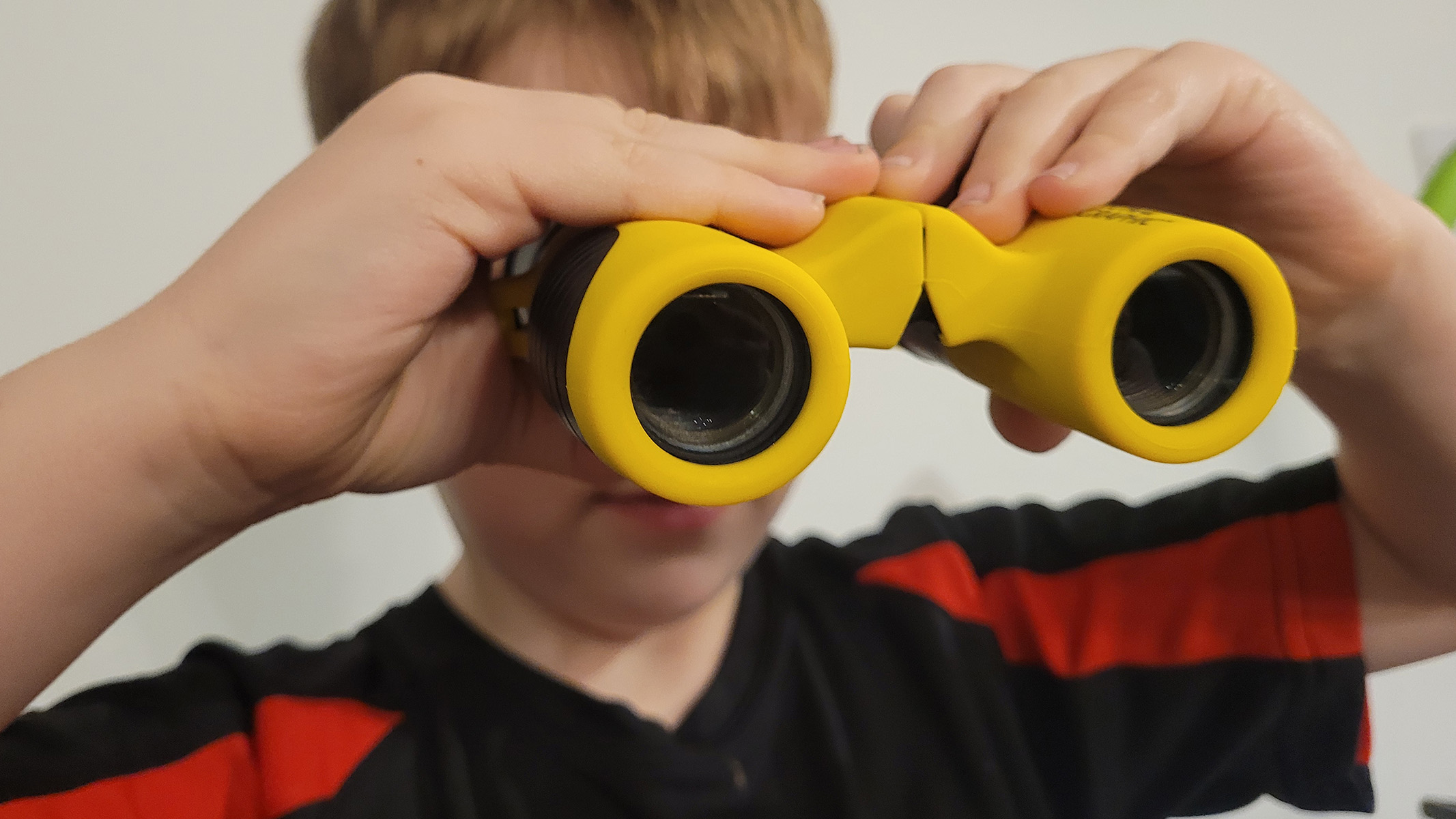
These are not the binoculars you want to buy your child if you want them to come stargazing with you, the tiny lenses simply don't let enough light through. However, they are perfectly fine for daytime nature spotting and backyard exploring, and you observe a close-up view of the moon, but beyond that, you'll want more capable glass for your child, and that means spending more money.
If the National Geographic 6x21 isn't for you
If stargazing is the main reason for purchasing a pair of kid's binoculars, there are some alternative models to consider which are still affordable yet boast more suitable skywatching specs. One such model is Celestron SkyMaster 12 x 60. They have excellent light transmission, thanks to the 60mm objective lenses. They also boast the preferred BAK4 glass, water resistance, and obviously double the magnification; however, they can still be purchased for less than $100. In fact, right now they are on sale for $69.99.
Another option is the Occer 12x25 compact binoculars, also currently on sale for $35.99. They are pretty similar to the National Geographic model we have reviewed, but with BAK-4 glass and double the magnification.
Take a look at our best binoculars for kids guide for other alternatives.

Tantse Walter is a writer, photographer and travel enthusiast that has spent over a decade facilitating global adventurous expeditions. She loves getting into the nitty-gritty of sourcing and planning itineraries, getting out and about in nature, and admiring the night sky.
